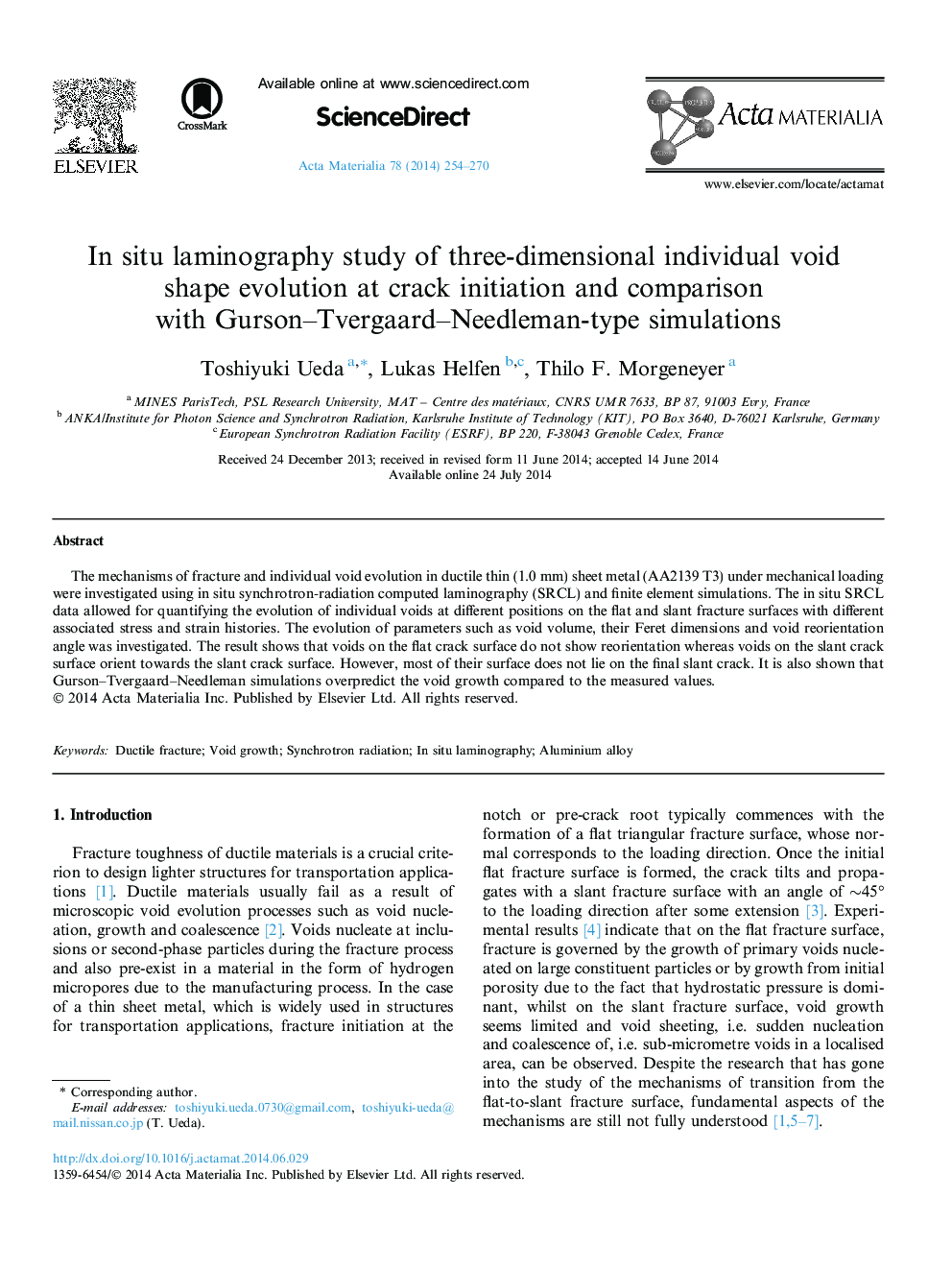| Article ID | Journal | Published Year | Pages | File Type |
|---|---|---|---|---|
| 1445573 | Acta Materialia | 2014 | 17 Pages |
The mechanisms of fracture and individual void evolution in ductile thin (1.0 mm) sheet metal (AA2139 T3) under mechanical loading were investigated using in situ synchrotron-radiation computed laminography (SRCL) and finite element simulations. The in situ SRCL data allowed for quantifying the evolution of individual voids at different positions on the flat and slant fracture surfaces with different associated stress and strain histories. The evolution of parameters such as void volume, their Feret dimensions and void reorientation angle was investigated. The result shows that voids on the flat crack surface do not show reorientation whereas voids on the slant crack surface orient towards the slant crack surface. However, most of their surface does not lie on the final slant crack. It is also shown that Gurson–Tvergaard–Needleman simulations overpredict the void growth compared to the measured values.
